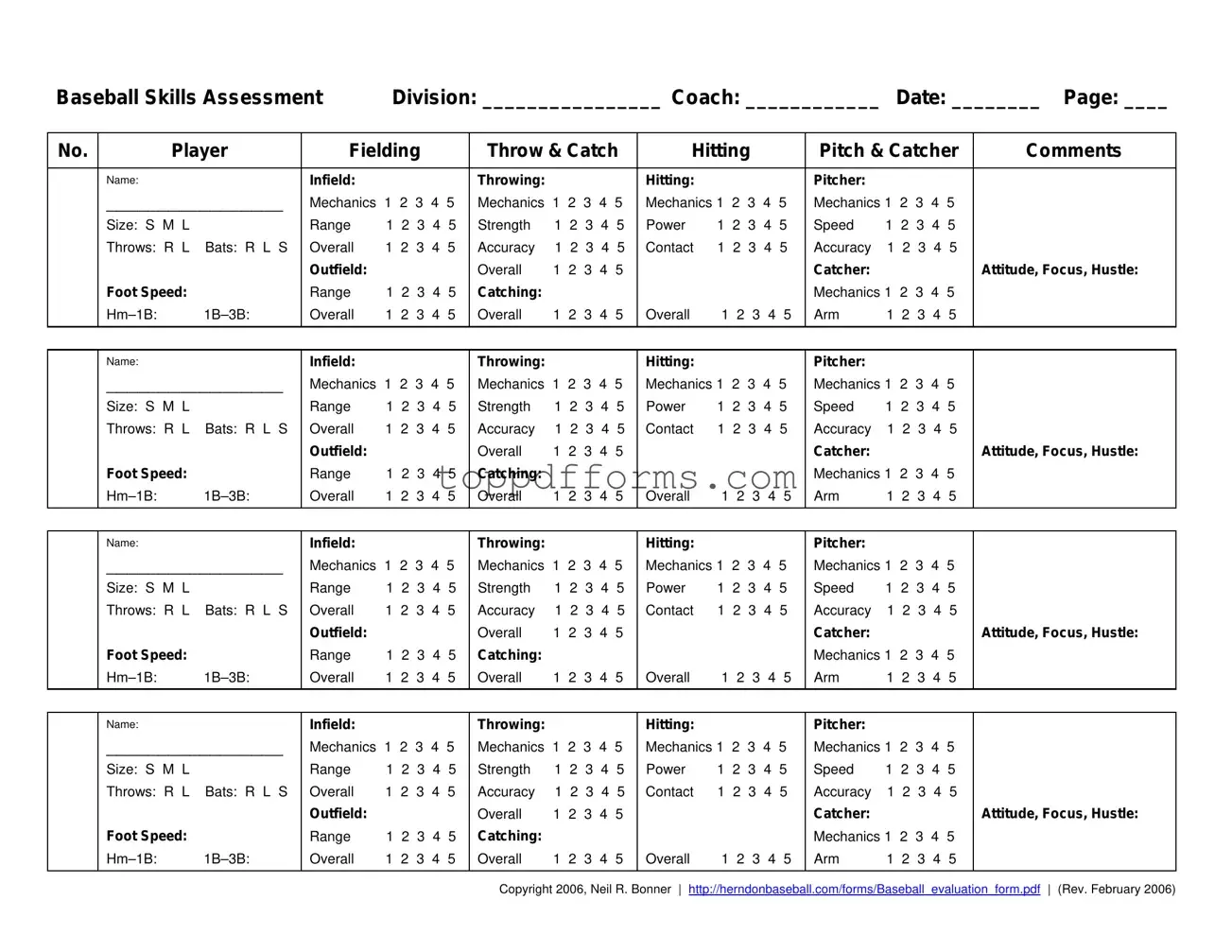What is the purpose of the Baseball Assessment form?
The Baseball Assessment form is designed to evaluate players' skills in various areas of baseball, such as fielding, throwing, hitting, and pitching. Coaches use this standardized format to assess players during tryouts and make informed decisions about team selections.
How should coaches score players on the assessment form?
Coaches score players on a scale from 1 to 5. A score of 5 indicates exceptional ability, while a score of 1 reflects a poor level of skill. Scores of 2, 3, or 4 represent varying levels of competency. This scoring helps ensure a fair selection process for All-Star teams and other competitive leagues.
What categories are included in the assessment?
The assessment covers several key categories: infield skills, outfield skills, throwing accuracy, catching mechanics, hitting mechanics, power, contact, and overall performance. Each category is further broken down into specific skills that players are evaluated on.
How long do the tryouts typically last?
Tryouts generally last between 2 to 2.5 hours. This timeframe allows for warm-ups, skill evaluations, water breaks, and a final thank you from the manager. The structured schedule helps maximize the evaluation process.
What should players expect during the tryouts?
Players can expect to participate in various drills that assess their skills. Activities include base running, infield and outfield drills, and hitting practice. Each player will have opportunities to showcase their abilities in a competitive environment.
Are there any specific criteria for selecting All-Star team members?
Yes, the selection process uses the quantitative scores from the assessment form to choose the first eight players. The team manager then selects additional players based on their criteria, which may include attitude, hustle, and performance during tryouts.
How important is attitude during the assessment?
Attitude is crucial. Coaches may award or deduct points based on a player’s demonstrated attitude, focus, and hustle. These qualities can significantly influence a player’s overall evaluation and selection for the team.
Can players be evaluated for multiple positions?
Yes, players can be evaluated for multiple positions during the tryouts. Coaches will assess skills in various roles, allowing players to demonstrate their versatility and potential contributions to the team.
What should players bring to the tryouts?
Players should come prepared with appropriate athletic gear, including cleats, gloves, and bats. Additionally, bringing water and any personal items needed for comfort during the assessment is advisable.
